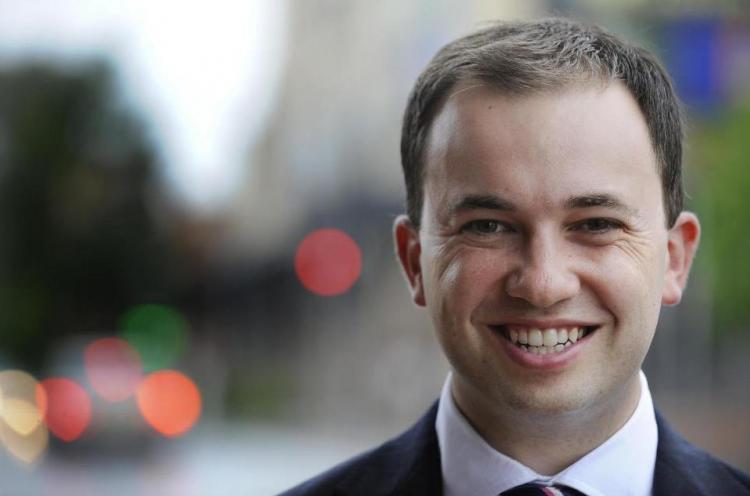
I would like to thank Her Excellency Professor Marie Bashir, the Governor, for her speech. Debates such as the Address-in-Reply provide us as politicians an opportunity to reflect on where we are, and where we want to go, on important policy areas.
As a new member of the Fifty-fifth Parliament, and one of the youngest, I am excited about this historic opportunity to be part of the change in New South Wales and to be part of the solution, in the words of the Governor, to rebuild, revitalise and re-energise the great institutional, economic and human resources of our great State of New South Wales.
As education is the best legacy we can leave future generations, I welcome the opportunity to reflect on this theme today. Education is important as it is preparing people for tomorrow, with the limited resources, knowledge and skills that we have today. A good education is the greatest gift we can give future generations. It is up to our generation to give the next generation the skills and resources they will need in a world that will be very different from that we have now. We continue to struggle with teaching students about a world that we, more than ever, have no idea how it will look in five, 10 or 15 years time. A child that begins kindergarten in 2012 will graduate from high school in 2024. Ken Robinson recognised this modern educational challenge when he observed in his authoritative lecture Do Schools kill creativity?:
Nobody has a clue ... what the world will look like in five years' time. And yet we're meant to be educating them for it.
Our system has to be ahead of its time, and I fear that around the country new approaches are needed to ensure that our future generations are best prepared to enter into a changing and dynamic world. They need skills, not just knowledge, and the capacity to quickly adapt to advances in technology, pedagogy and thinking. All this begins with adequately resourcing schools and ensuring that all schools are sufficiently resourced to deliver a decent education. I welcome the Gonski review of school funding. However, with school choice comes the responsibility of the State and the school to ensure that any choice made by parents provides a minimum standard of education that will prepare students with a basic set of skills in reading, writing and numeracy. More so, any reform should be to increase the performance of everyone, not just certain groups, across the board.
With the imminent release of the Gonski report, some radical options need to be seriously considered. Personally, I would like to see a debate about charter schools occur in New South Wales. Charter schools are State-funded community schools, accessible to all for no additional compulsory contribution and run by local boards, while meeting minimum standards set down by the State. In other words, while the State continues the funding, the governance and running of the school remain in community hands. Across the world they go by several names—community schools, charter schools and independent public schools, as they are called in Western Australia. Both the values and the principles are the same. New South Wales should follow the lead of the new Coalition Government in Western Australia that oversees over 100 independent public schools. This number is set to double in the next two years, with hundreds of schools across the State voluntarily opting for greater autonomy. To quote the Western Australia's Education Department's website:
Independent Public Schools set their own strategic directions, have authority for day-to-day decision making and are in an ideal position to make decisions that best cater for their students. Parents and community members have an important and enhanced role in this initiative.
Inside their system they have primary schools and high schools. Some schools have entered the system on their own, others have entered in clusters to reach economies of scale in resource delivery. They include schools in well-off communities and schools in communities that are less well off. Western Australia has been inundated with current public schools wanting to take control of the day-to-day operations themselves. Each school has a board that endorses and regularly reviews the day-to-day operations including the budget, the school business plan and the selection of a new principal. The principal, not the department, has the role of selecting new staff, so school staff are employed on the basis of need, rather than arbitrary quotas or requirements set by head office.
A school can only become an independent public school after extensive community consultation. This ensures that schools that become independent are in a community willing to devote time and effort to achieving a top-class result. As a Liberal I do not believe the radical reforms we need in our education system can come from a centralised system run out of Sydney or Canberra. We need the people on the ground to make the decisions about how best to educate our children, but we need to make sure all students have access to a decent education that will prepare them for the future. In the same way as the Minister for Health has decentralised control of critical areas of our health policy with local health districts and community governance, we should give the power of schools to the local community if they so wish.
Overall, schools are able to equip their school based on their own needs, rather than by set standards. Communities feel empowered because they feel their decisions are having an impact on the operation of their schools. Most notably, they have been successful in both middle-class and less-well-off communities. As my Federal parliamentary colleague and shadow Minister for Education, Christopher Pyne, recently noted, an independent public school just outside Perth has used its extra autonomy to engage parents as well as students. He said:
This school is using the resources it has to reward parents and encourage them to become involved in their child's life at school. Parents are able to earn points in a reward system that allows them to access internet facilities, buy canteen lunches for their children, and pay for uniforms or excursions. Parents earn points by participating in activities such as mentoring, attending P & C meetings, volunteering at school carnivals or helping children at the school's read and spell club.
While not a measure of a holistic success of the school, it is no surprise that both the attendance rates and National Assessment Program—Literacy and Numeracy results of that specific school have gone through the roof. In a sense, independent public schools are not just surviving because of a strong community; they are part of the broader scheme to build and strengthen communities across the country. The OECD recently found that greater community involvement in education meant better across-the-board results in mathematics, science and literacy. In my opinion, one of the best ways of engaging the community is by involving them in the everyday running of the schools.
The small decisions and large decisions alike in independent public schools are made by communities affected by them. Instead of the centrally managed Building the Education Revolution process, an empowered community could have avoided the debacle that was the Building the Education Revolution program. Furthermore, the local focus would have meant each community would focus on value for money and the needs of the individual school. The $1.5 billion of waste across the country could have built, from scratch, around 60 high schools.
While I concede there have been some mixed experiences with independent public schools and their equivalents, particularly in the United States of America and Canada, it is imperative that a debate is had about their merits and their detriments. In Western Australia, for example, governments should have spent more time engaging the community, especially the teachers unions, on the need for change in the system. They should have better engaged with the Teachers Union to better integrate their thoughts and visions into local school governance and to ensuring better teaching standards.
In the United States of America the results have been mixed. However in New Orleans, where the State Government used the opportunity of Hurricane Katrina to build a school system afresh, the results are impressive. Over 60 per cent of the city's students now attend State-funded charter schools. In 2010-11 less than one-third of students were deemed to be failing. This number sounds very high, except when one looks at what the numbers were in 2005, before Hurricane Katrina. Back then two-thirds of students were failing. The greater the incentive there is to improve results the better we can become.
Without a doubt there have been instances where charter schools have been set up without community support, without proper planning and consultation, and have delivered less than optimum results for students. As we have seen time and again, good governments pursuing good policy can have success, whereas bad governments pursuing bad policy will not. I am convinced this Government is a good government that will pursue good policy. However, we should not just confine ourselves to discussing the international experience, but look at a holistic model that can fit in with the outcomes of the Gonski review and our current socioeconomic status formula. An Australian model should aim to take the best of the experiences from around the world.
The New South Wales Government should take this idea seriously. I have written to the Minister for Education outlining my case for our State to debate the merits of independent public schools. We should use the imminent outcome of the Gonski review to debate school funding, and include consideration of independent public schools and fully funded non-government schools to cater for students with disabilities or learning difficulties. This measure has the strong support of Christian Schools Australia, the peak body representing 130 member schools Australia-wide with approximately 46,000 students and more than 2,000 teaching staff.
Like any reform, we must get the implementation right and have the right community model and government involvement, backed by strong metrics to assess the success of the newly formed school. Australia should be comparing itself to the fastest runners in the field, not the slowest. We should focus on skills rather than just knowledge. We should focus on an environment that fosters creativity, rather than discourages it. Our education system needs to be underpinned by solid minimum standards, yet give schools the freedom to cater for the individual needs of students to foster and create their own talents. Our State cannot afford to not have a debate about charter schools. New South Wales should not be a follower in education, it should be a leader.
